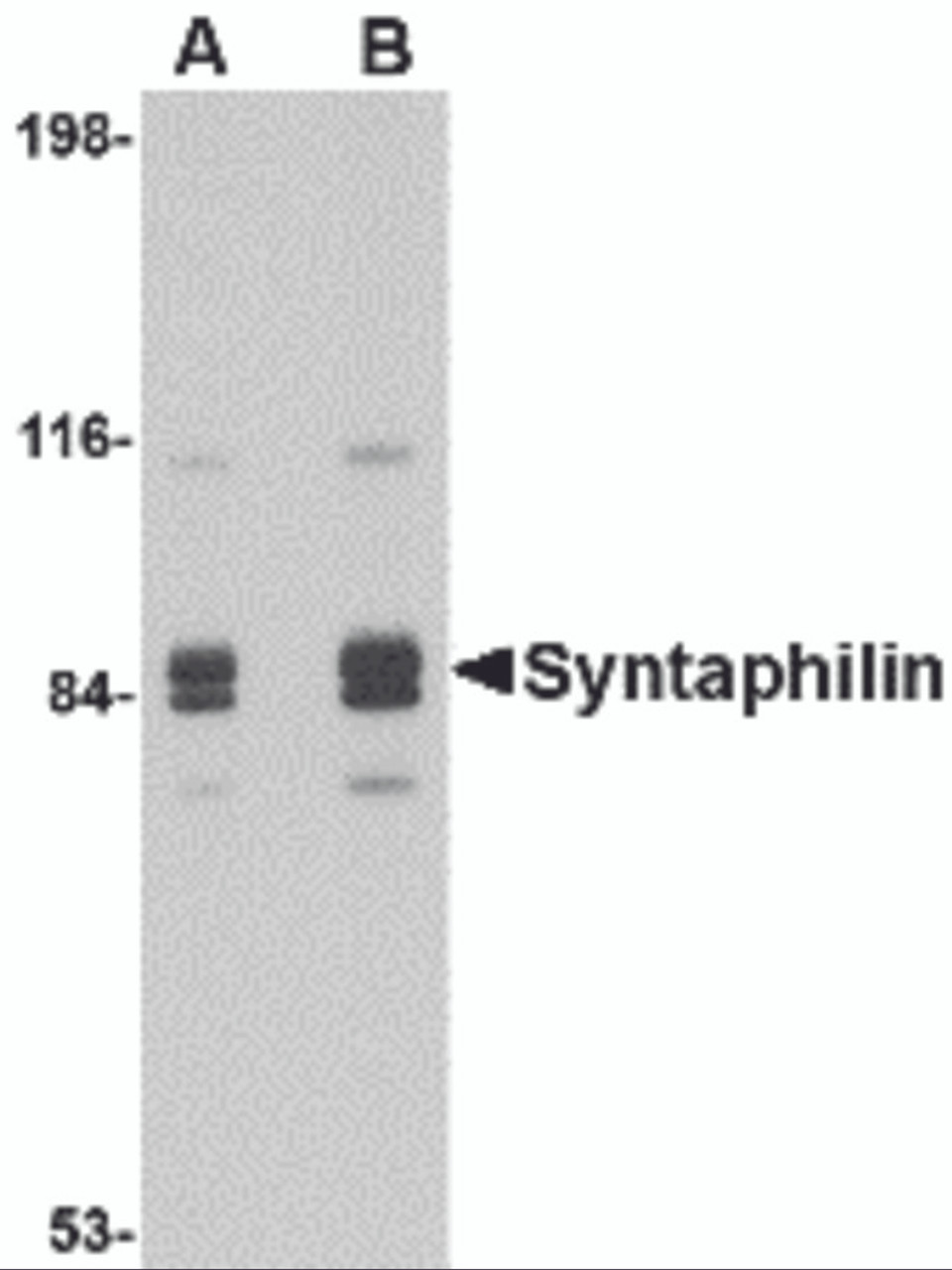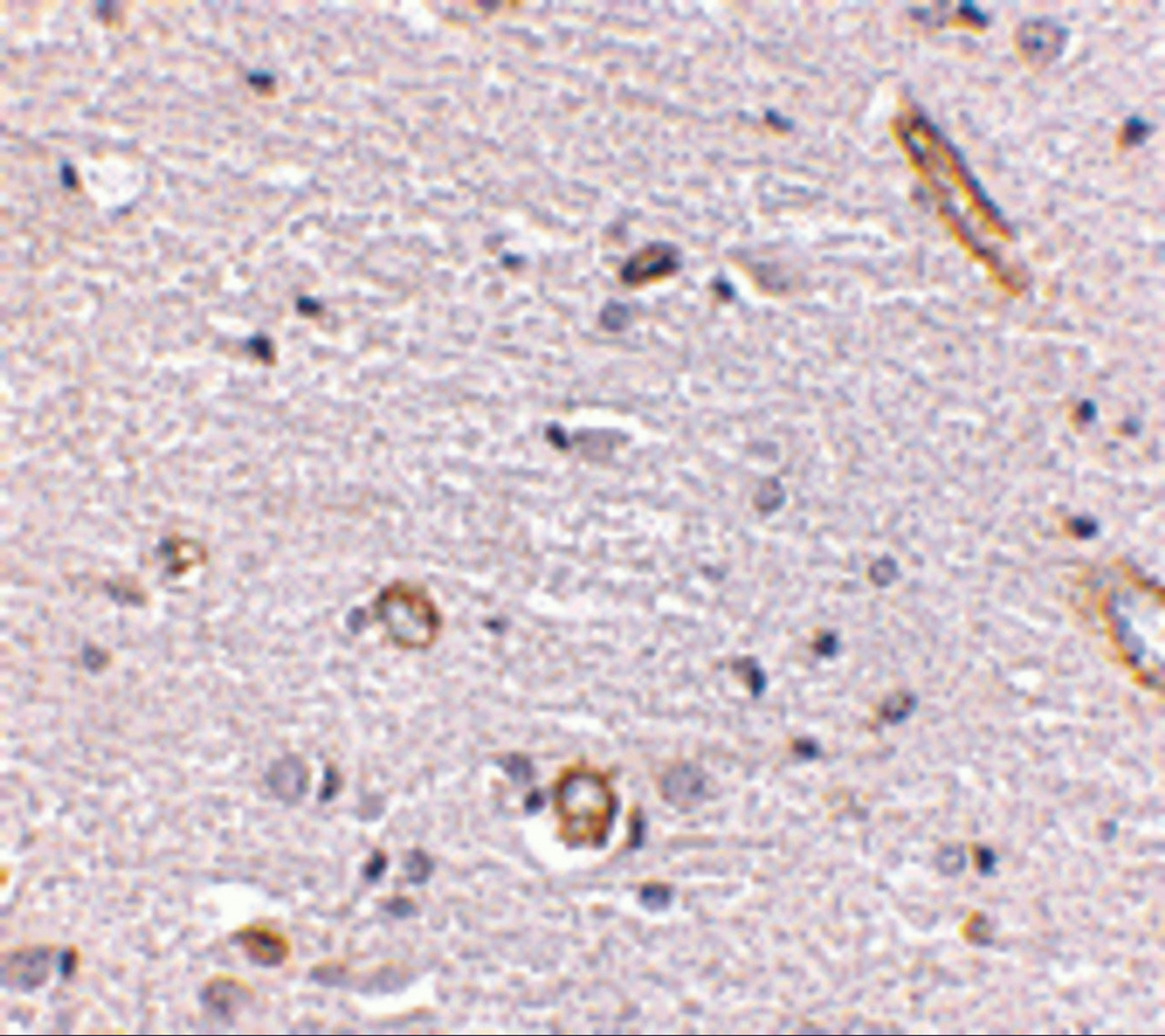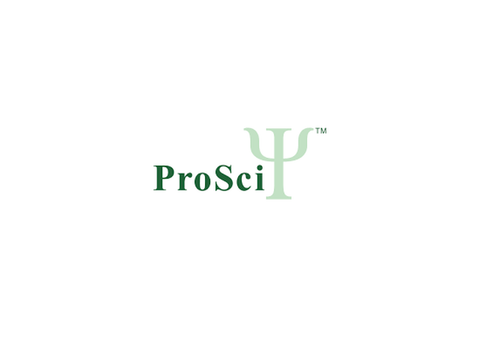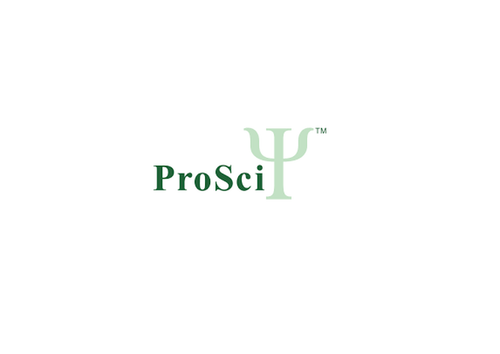Product Description
Syntaphilin Antibody | 4635 | ProSci
Host: Rabbit
Reactivity: Human, Mouse, Rat
Homology: N/A
Immunogen: Syntaphilin antibody was raised against a 16 amino acid synthetic peptide from near the center of human Syntaphilin.
The immunogen is located within amino acids 350 - 400 of Syntaphilin.
Research Area: Neuroscience
Tested Application: E, WB, IHC-P, IF
Application: Syntaphilin antibody can be used for detection of Syntaphilin by Western blot at 1 - 2 μg/mL. Despite its predicted molecular weight, Syntaphilin usually migrates at higher molecular weight in SDS-PAGE. Antibody can also be used for immunohistochemistry starting at 5 μg/mL. For immunofluorescence start at 20 μg/mL.
Antibody validated: Western Blot in rat samples; Immunohistochemistry in human samples and Immunofluorescence in human samples. All other applications and species not yet tested.
Specificiy: N/A
Positive Control 1: Cat. No. 1463 - Rat Brain Tissue Lysate
Positive Control 2: Cat. No. 10-301 - Human Brain Tissue Slide
Positive Control 3: N/A
Positive Control 4: N/A
Positive Control 5: N/A
Positive Control 6: N/A
Molecular Weight: N/A
Validation: N/A
Isoform: N/A
Purification: Syntaphilin Antibody is affinity chromatography purified via peptide column.
Clonality: Polyclonal
Clone: N/A
Isotype: IgG
Conjugate: Unconjugated
Physical State: Liquid
Buffer: Syntaphilin Antibody is supplied in PBS containing 0.02% sodium azide.
Concentration: 1 mg/mL
Storage Condition: Syntaphilin antibody can be stored at 4˚C for three months and -20˚C, stable for up to one year. As with all antibodies care should be taken to avoid repeated freeze thaw cycles. Antibodies should not be exposed to prolonged high temperatures.
Alternate Name: Syntaphilin Antibody: bA314N13.5, KIAA0374, Syntaphilin
User Note: Optimal dilutions for each application to be determined by the researcher.
BACKGROUND: Syntaphilin Antibody: Syntaphilin was initially identified in a yeast two-hybrid screen with the carboxy terminal region of Syntaxin-1 as bait. Syntaxin-1 is a key component of the synaptic vesicle docking machinery that forms the SNARE complex with synaptobrevin and SNAP-25. Syntaphilin competes with SNAP-25 for binding to syntaxin-1 and inhibits the formation of the SNARE complex, thereby potentially regulating synaptic vesicle exocytosis. Syntaphilin also binds dynamin-1 and inhibits dynamin-dependent endocytosis. Mice lacking syntaphilin show an increased level of mitochondrial motility and a reduced density of axonal mitochondria. This correlates with an enhanced short-term facilitation and significant impairments in motor ability, suggesting syntaphilin plays a major role in presynaptic function. Multiple isoforms are known to exist.
 Euro
Euro
 USD
USD
 British Pound
British Pound
 NULL
NULL












